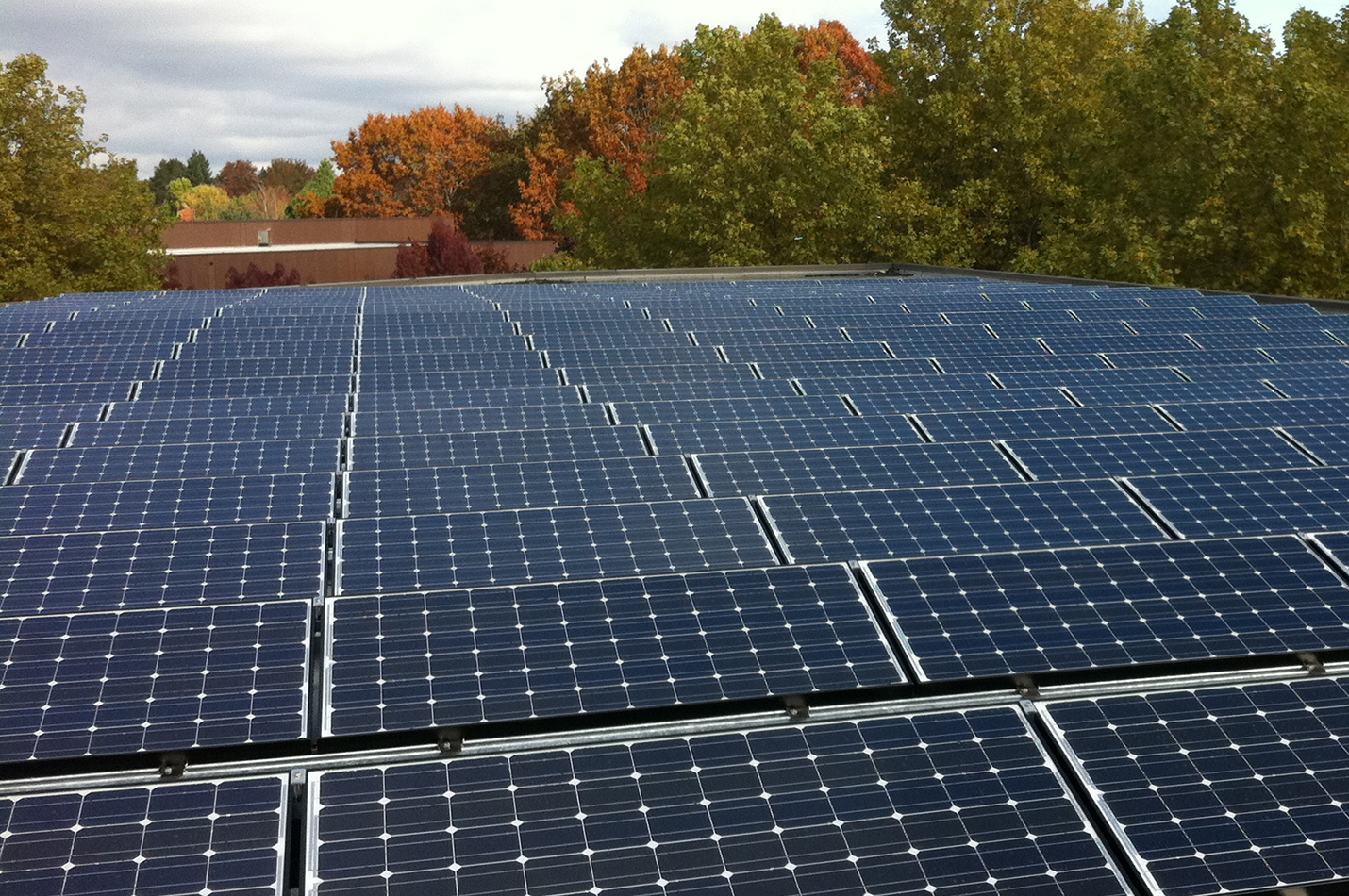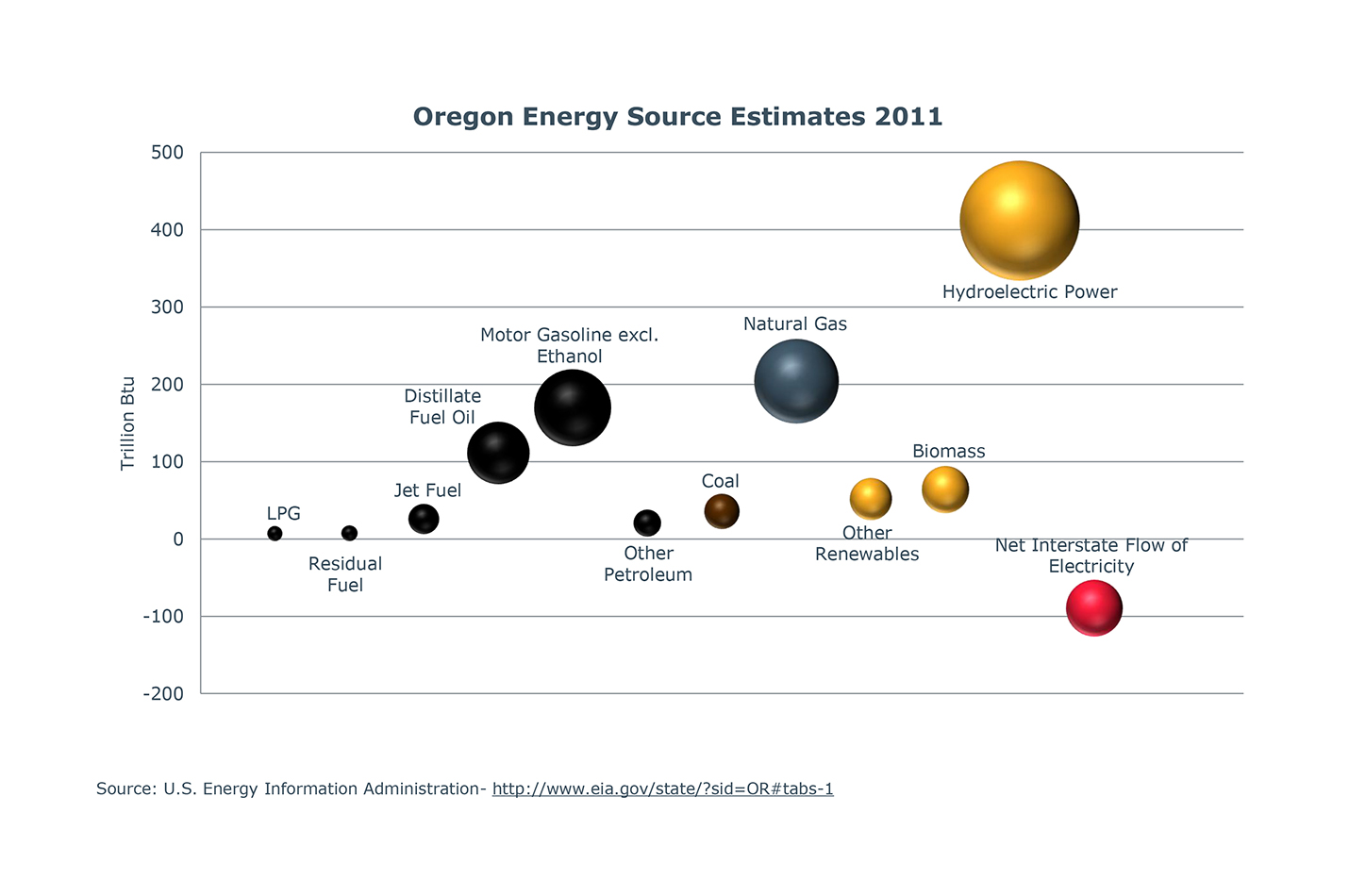State energy sources and consumption : A road map for the future
Oregon is known as a green energy production leader around the nation and a little research shows why. We can also push that research out and follow the trends to create a road map for the State’s continued leadership in clean energy.
Oregon currently has a single coal fired power plant, Boardman Coal Plant, which provides 550 megawatts to the State’s power supply and is scheduled to be decommissioned in the near future. This will leave 4 fossil fuel plants, all natural gas, operating inside the State. These plants have an approximate capacity of 1.6 gigawatts (GW). To provide some perspective, all power plants in the State (not including distributed local generation such as roof top solar) are capable of generating approximately 13.1 GW of power. This means that 87.7% of power generation inside the State is not sourced from fossil fuels (18.3% is generated from fossil fuels). With those numbers it’s easy to see why Oregon is seen as a national green energy production leader.
However, if you dig a little deeper an odd fact emerges. All the numbers quoted so far are for generation, and it would be easy to assume consumption numbers match very closely, but this is the wrinkle in Oregon’s green power story. When we look at consumption we find that Oregon’s fossil fuel generated electricity consumption is approximately 30.7%. That is a huge jump from the 18.3% that is generated in the State. How can this be? This phenomenon is partially a result of regional renewable portfolio standards (RPS) that have been mandated by regional state legislation. Because nearby states have an increased demand for renewable energy, Oregon is in the economically enviable position of exporting clean energy, but that economic benefits means it is cheaper to export our clean energy and then import fossil fuel generated power from other neighboring states. This seems, and is, at odds with Oregon’s green power story.
A decade ago the RPS was a great tool to encourage growth in an emerging market, but now it is time to expand our methods. As we are increasingly aware of our energy consumption and our focus on energy efficiency expands we should also not become complacent in our assumptions of power generation. Just because there are wind turbines or solar cells near you does not mean your power is coming from these areas. As power utility companies buy and sell power between states, RPSs, or the tool that replaces RPSs, should be expanded to include interstate transmissions, and this information should be made more transparent to consumers. With this information given to consumers we will see the clean energy sector grow, Oregonians will call for more clean power to be consumed in Oregon and not allow dirty power to be imported.
Eventually, this demand will allow states all over the nation with an over abundance of renewable energy generation potential to join Oregon in becoming energy exporters. This will make wind farms in the Dakota’s delivering power to Los Angeles, or solar power in Arizona powering Chicago in the winter, not only economically viable, but an energy production boom for those states. The world’s desire to maximize energy efficiency coupled with the decommissioning of old power plants has significantly expanded the market’s demand for renewable energy. Renewable energy will reduce energy market volatility and allow us to pass on a cleaner environment for our children.




